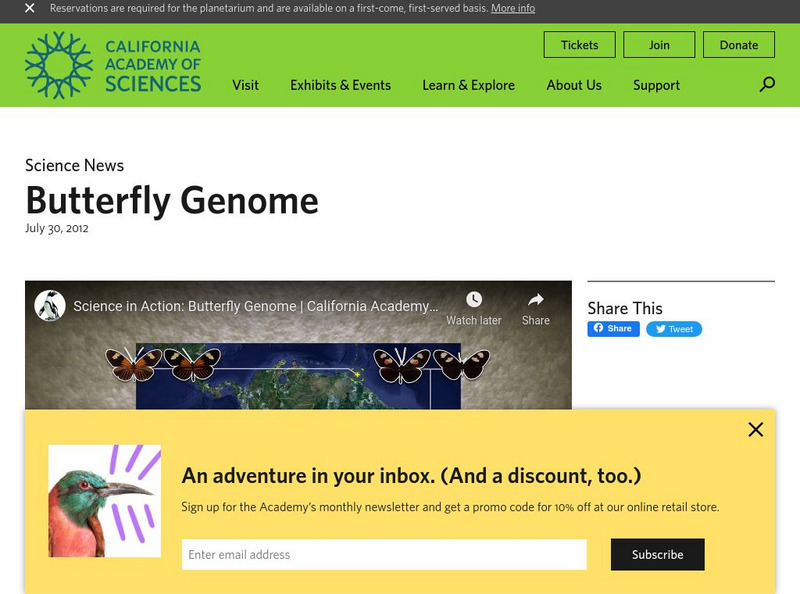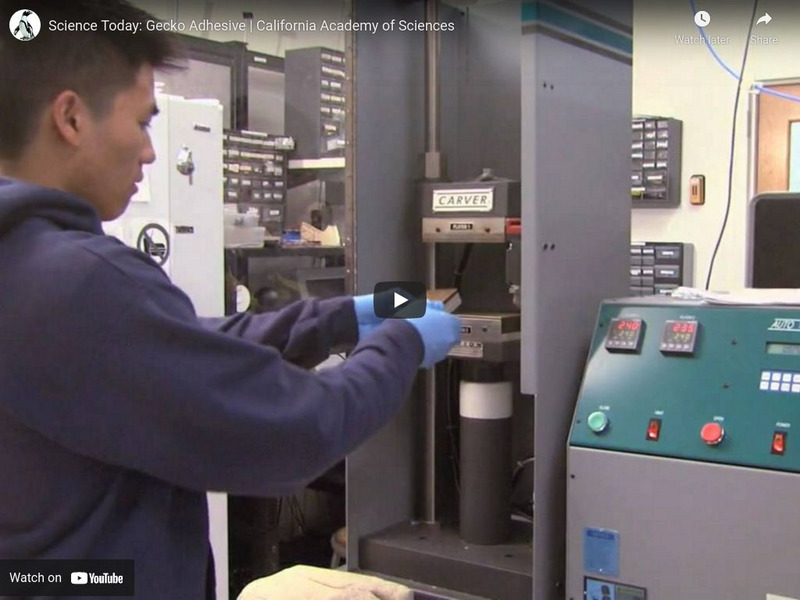Curated Video
Aposematism: The Colorful Language of Danger in the Animal Kingdom
This video explains the concept of aposematism, where animals use bright colors and patterns to signal to predators that they are dangerous or poisonous. It explores examples such as poison dart frogs and the gila monster, as well as...
Curated Video
Including Stories and Examples in Body Paragraphs
This video lesson teaches students how to add detail to their informational writing by incorporating stories and examples in their body paragraphs. It emphasizes the importance of being specific and including as many details as possible...
Mazz Media
Adaption
This live-action video program is about the word adaptation. The program is designed to reinforce and support a student's comprehension and retention of the word adaptation through use of video footage, photographs, diagrams and...
Mazz Media
Adapt
This live-action video program is about the word adapt. The program is designed to reinforce and support a student's comprehension and retention of the word adapt through use of video footage, photographs, diagrams and colorful, animated...
Curated Video
Improving Clarity in Informational Writing with Transition Words and Phrases
In this video, the teacher explains how to make writing clear in an informational text by adding transition words and phrases. The teacher guides the students through the process of identifying chapters, reviewing beginning and ending...
Curated Video
Outlining an Informational Text: Grouping Facts into Chapters
In this video, the teacher explains how to outline an informational text by grouping facts into chapters. They guide the students through the process of creating a table of contents with chapter titles and adding bullet points of...
Curated Video
Mastering Technical Vocabulary in Informational Writing
In this video, the teacher provides tips on how to sound like an expert when writing an informational text. They emphasize the importance of adding technical vocabulary and provide examples of how to identify missing terms in research...
Be Smart
Orchid Mantis: Looks That Kill
Rather than hunting for food, the orchid mantis entices the prey to come to it. A cool video discusses this type of mimicry as part of a larger biology playlist. The orchid mantis appears like any typical orchid to us, but it stands out...
MinuteEarth
The Secret Social Life of Plants
Who knew plants can communicate? An interesting video shows how plants communicate with insects and other plants. The instructor gives many examples including mimicry, parasitism, and self-defense.
MinuteEarth
This Is Not A Bee
Is it a bee or not a bee? That seems to be the question of a video lesson that explains how insects such as flies and moths mimic the coloring of bees. The narrator discusses the purpose of the coloring in association to predators.
MinuteEarth
Are These Butterflies The Same?
A descriptive video lesson explains the history of the white admiral and red-spotted purple butterfly. As the butterflies' habitats overlap, scientists discovered a specimen with characteristics of both butterflies. The narrator...
SciShow
8 Creepy Animals That Are Actually Harmless
Did you know there's a lizard that shoots blood out of its eyes? This video explores animals whose appearance or behavior is frightening. Despite this, scholars see these characteristics are actually essentially harmless adaptations that...
SciShow
Robots Inspired By Animals
What would you name a swimming humanoid robot? Scientists went with the swumanoid. Video focuses on how scientists use animals and nature for inspiration in designing robots. It covers jumping, camouflage, flying, and more. These...
Bozeman Science
Aposematic Coloration
It's not irrelephant to know which animals use warning coloration to avoid predators. The video explains how brightly colored animals are able to survive in the natural world. It also details aposematic coloration for both sexual...
Crash Course
Community Ecology II: Predators
The first examples of mimicry we have found date back to before flowering plants. The video goes in depth on predators at the community ecology level. It includes discussions of herbivores, parasitism, adaptations, cryptic coloration,...
TED-Ed
Why the Octopus Brain Is so Extraordinary
What creature can solve puzzles, learn from observation, use tools, oh, and has eight legs? Why the octopus, of course. Follow along as the video explores the brain of this amazing Coleoidea .
PBS
Pbs Learning Media: Wild Kratts: Mimic in the Grass
In this episode of the Kratt brothers, we learn about cheetahs and other animals, and how they protect themselves through mimicry. The storyline has a baby cheetah being catnapped by a fashion designer. It escapes by imitating a honey...
Science Friday Initiative
Science Friday: Caterpillar Mimicry
How does a parasitic caterpillar survive inside an ant nest? According to research published this week, it sounds like a queen ant.
Minute Earth
Minute Earth: The Secret Social Life of Plants
Plants are more than just green, photosynthesis machines. They behave and adapt to their environmental cues much like animals do. [2:32]
NPR: National Public Radio
Npr Videos: Skunk Bear: Nature's Masters of Disguise
Fake snakes, mimicking moths and disguised flies: surviving in a bug-eat-bug world. [3:56]
California Academy of Sciences
California Academy of Sciences: Butterfly Genome
How does mimicry work in butterflies? Academy researcher Durrell Kapan and his colleagues have found the answer in one butterfly's genome.
California Academy of Sciences
Ca Academy of Sciences: Bio Inspiration: Gecko Adhesive
Bio-inspiration is when engineers and scientists look to nature for ideas. Locally, researchers at UC Berkeley are developing an uber-adhesive based on a gecko's feet. [3:44]
Bozeman Science
Bozeman Science: Aposematic Coloration
Paul Andersen explains how aposematic coloration (or warning coloration) is used for protection in the natural world. He explains how bright colors can be caused by either sexual selection or a warning coloration to predators. He also...
















